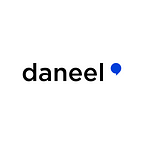Blockchain: a revolution in the making
In the face of centralised fiat currencies, many refer to blockchain as the technology that has come to save the day. With over $2.7 bn. raised in ICO crowdfunding in 2017 alone, blockchain and the future of finance have almost become interchangeable. However, as a plethora of tokenised business models have flooded the market, so too has the opportunity to extend blockchain beyond the backbone of cryptocurrency: from voting systems to diamond tracking, blockchain may not only promise to decentralise finance; but may also address centralised systems at a much more global level.
Block by block
Now let’s go deeper in the explanation: one of the core innovations behind the ‘blockchain’ is just that: the container structure known as a block.
Depending on the blockchain, the exact size of a block can vary from under 1MB to up-to 8MB: the larger the size, the more transactions the block is able to process. This is the function of the ‘block’ within the blockchain:
To process transactions, blocks are composed of a header followed by a long list of transactions. Within a single block, the header is what contains the metadata, which falls into three categories: the metadata for the previous block hash, which means that each block is essentially ‘inherited’ from the previous block; metadata for mining competitions, which ties to granting the block a valid hash, a timestamp and difficulty level; and then the metadata that summarizes the transactions in the block.
But how is each block identified? This is where block identifiers come in: this ‘digital signature’ or cryptographic hash is formed by hashing the block header twice using the SHA256 algorithm.
Put simply: the interdependency required by each block renders a single point of failure almost impossible; but with no need for the same centralised control required to reinforce security for fiat-based currencies. However, as part of this block-based system, this reinforcement of security is taken several steps further under the mining process.
Motivated for mining: an incentive for security
To ensure that the number of blocks found each day by miners remains stable, bitcoin mining is not resource-intensive and difficult by accident. Under the majority of forks, the primary method of ‘reaching consensus’ is validating blocks through what is known as ‘proof of work’: by allowing this proof of work to be verified by other Bitcoin nodes each time they receive a block, mining ensures that Bitcoin nodes reach a consensus that is tamper-proof and secure.
However, in addition to renewing this consensus between Bitcoin nodes, mining also serves another crucial function: introducing further Bitcoins into the system. This acts as an incentive for miners, who are in turn paid any transactions fees in addition to a ‘subsidy’ for any coin that is newly created.
So, what does mining do? This automates incentives to renew security within a system that is decentralised.
However, despite the core foundational technologies of how consensus is achieved and renewed using this block-based system, the real revolution of blockchain is the ability to create private issued currencies known as ‘tokens’.
Time to tokenize
A token is at its base privately issued currency. Traditionally, governments issue currency and set its terms, directing how the economy works around it. With blockchain technology, any organization can issue and regulate its own “currency” creating new self-sustainable mini- economies.
Building on the innovations of blockchain technology, the application that is raising eyebrows among investors is the birth of the utility token: unlike a government-issued currency, tokens have no such ‘terms’ on how they should behave and interact within the economy. Within blockchain, tokens offer the opportunity to create new ‘miniature economies’ completely set apart.
With the core technologies having enabled blockchain to mature as this rival platform, this ‘time to tokenize’ typically falls under the following four applications:
On the one hand, there are ‘tokenised assets’, which are issued using an ICO (or initial coin offering): this effectively enables the buyer to exchange fiat currency for tokens or another cryptocurrency such as Ethereum. Similar to stocks in a company, this is driven by the expectation that the token will increase in value.
On the other hand, this token structure is now also beginning to be adopted as an alternative method of paying for a product or service; similar to purchasing that iTunes voucher at the supermarket, only in cryptocurrency and within the confines for the ICO ecosystem.
And then comes another exciting application: legal tokens for establishing contracts and legal relationships. This may provide a window into how paper contracts and documents could be automated using blockchain technology, saving time and resources. Whether sing rights or other licensing models, blockchain may have more implications outside of enabling cryptocurrency than many currently expect.
A revolution in the making?
To many enthusiasts within the crypto community, blockchain truly represents a revolution that has already begun: with existing innovations that have enabled the birth of not only cryptocurrencies, but also tokenised products and services; blockchain has almost become synonymous with a ‘revolution’ in crowdfunding and purchase methods.
However, with Blockchain innovations such as smart contracts now filtering into industries and applications completely separated from investing and digital currencies, it appears that the true ‘revolution’ may have a much broader reach than we might expect.
Bibliography
LAKHANI, K., & IANSITI, M. (2017, January/February). Technology: The Truth About Blockchain. Retrieved July 20, 2018
Kosba, A., Miller, A., Shi, E., Wen, Z., & Papamanthou, C. (2016, May 01). Hawk: The Blockchain Model of Cryptography and Privacy-Preserving Smart Contracts. Retrieved July 20, 2018
Download Daneel for iOS or Android.
Twitter: https://twitter.com/daneelproject
Telegram: t.me/DaneelCommunity
Facebook: https://www.facebook.com/daneelproject
LinkedIn: www.linkedin.com/company/11348931/
YouTube: https://www.youtube.com/channel/UCJH6gsFUJlZr_ka3HQjZhKw
Github: https://github.com/project-daneel
